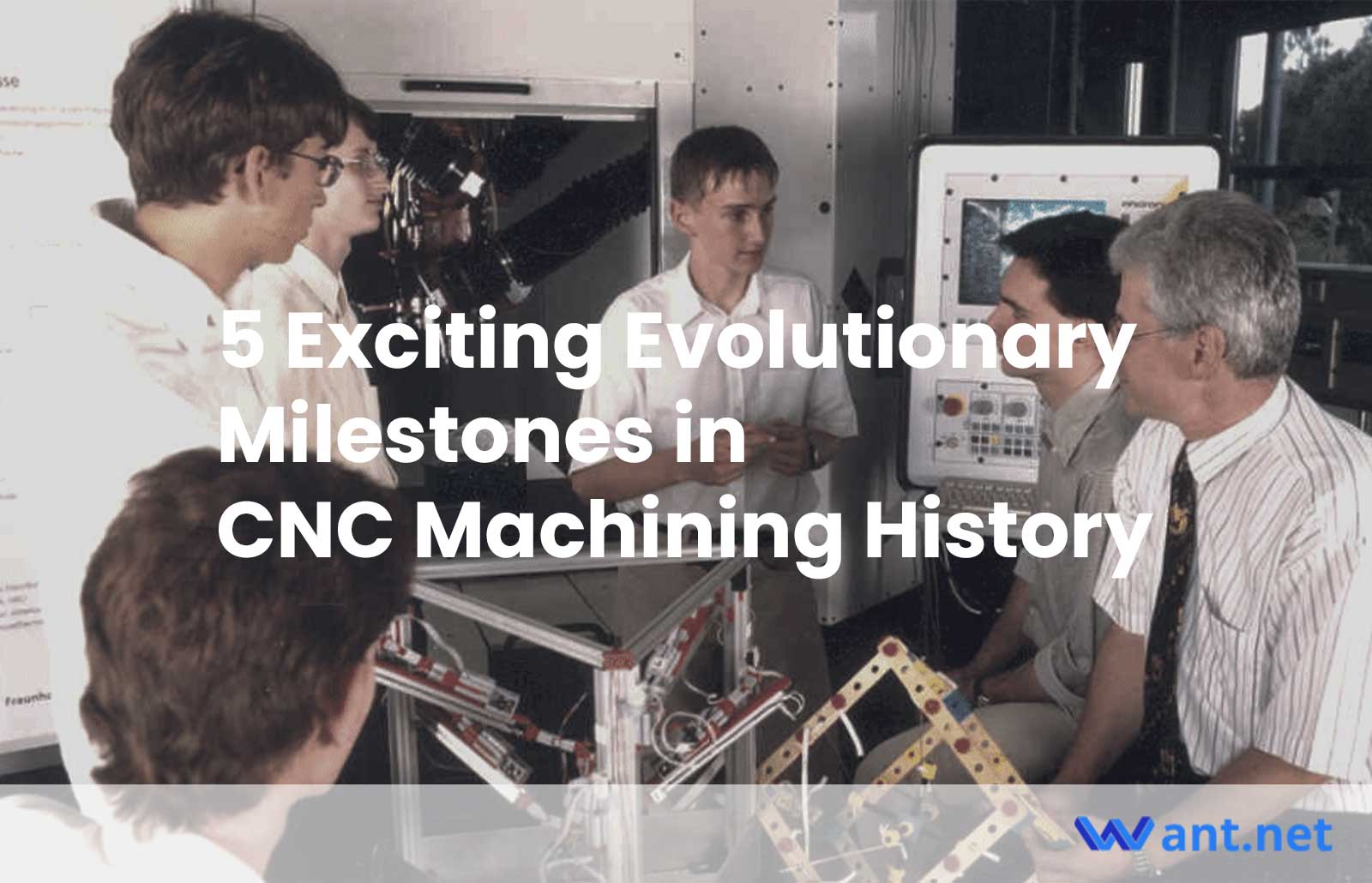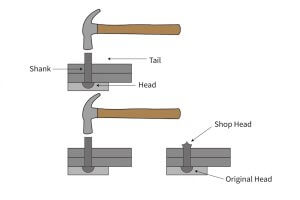CNC machining has revolutionized manufacturing, providing precise and automated production processes. Throughout its history, CNC machining has witnessed significant milestones that have propelled its advancements. In this article, we explore five key evolutionary milestones that have shaped CNC machining into its present form. From the pioneering work of John T. Parsons to the accessibility of CNC machines in the 2000s, we delve into the stories behind each milestone and their impact on the manufacturing industry. Join us on this journey as we uncover the pivotal moments that have transformed CNC machining and revolutionized modern manufacturing.
Milestone #1: 1940’s – John T. Parsons and Experimental Milling Machine
John T. Parsons emerged as one of the pioneers of CNC machining, playing a pivotal role in its development. During the 1940s, Parsons designed an experimental milling machine that revolutionized metal cutting and shaping processes. His contributions would lay the groundwork for the refined and precise CNC machining we see today.
Parsons’ experimental milling machine was a breakthrough in manufacturing technology. It allowed for the cutting and shaping of metal with unparalleled accuracy and efficiency. By automating the process, Parsons eliminated human error and introduced a new level of precision, transforming the capabilities of machining operations.
Parsons’ work was of paramount significance in making CNC machining more accurate and versatile. His experimental milling machine served as a catalyst for the development of programmable machines, enabling complex and intricate manufacturing tasks. The introduction of automation and precision in metal cutting and shaping opened doors to a myriad of possibilities, paving the way for the widespread use of CNC machining in various industries today. Parsons’ contributions set the stage for the future evolution of CNC machining as an essential tool in modern manufacturing processes.
To understand the essential components of a CNC machine and delve deeper into its functionality, you can explore our article on the 12 Essential Components of a CNC Machine Every Beginner Should Know
Milestone #2: 1940s and 1950s – CNC Machines in Public Use
During World War II, CNC machines emerged as a response to the demand for efficient and accurate manufacturing processes. The military needed precise and standardized parts for weapons, vehicles, and aircraft. CNC machines, with their ability to automate machining operations, played a crucial role in meeting these requirements and supporting the war effort.
After the war, CNC machines transitioned from military applications to civilian use. In the 1940s and 1950s, these machines became available to the public, opening up new possibilities in manufacturing. Industries such as automotive, aerospace, and electronics began to adopt CNC machines for their production processes. The ease of programming and the consistent quality of output offered by CNC machines made them indispensable in achieving higher productivity and cost efficiency.
The 1950s marked significant advancements in CNC machining, particularly in the areas of milling and contouring. CNC machines were increasingly capable of performing complex operations, allowing for precise shaping of components. This led to improvements in the quality and accuracy of machined parts. Additionally, advancements in microprocessors during this era made CNC technology more accessible and affordable, further driving its widespread adoption across industries.
The developments in CNC machining during the 1940s and 1950s laid the foundation for its integration into mainstream manufacturing. The wartime demand for precision, coupled with the availability of CNC machines to the public, fueled their rapid growth and transformed the manufacturing landscape. The continued advancements in milling and contouring capabilities set the stage for further innovations in CNC machining in the years to come.
Milestone #3: 1960’s to 1970s – Introduction of Numerical Control (NC) Machines
The 1960s to 1970s witnessed a significant milestone in CNC machining with the introduction of the first Numerical Control (NC) machines. These machines utilized computerized controls to automate machining operations, marking a shift from manual input to digital instructions. During this period, the installation of NC machines in manufacturing facilities began, heralding a new era of precision and efficiency in machining processes.
Early NC machines had a range of capabilities and limitations compared to their modern counterparts. While they provided greater accuracy and repeatability than manual machining, their hardware and software were relatively limited. The functions of early NC machines were primarily focused on toolpath generation and machine simulation, lacking the advanced capabilities seen in contemporary CNC machines. Despite these limitations, early adopters of NC technology found success by adopting innovative approaches that centered on reducing setup time and optimizing machining operations.
Early adopters of NC technology embraced the transformative potential of these machines and explored innovative approaches to maximize their benefits. They developed techniques to minimize setup time, such as using standardized workholding fixtures and tooling systems. They also experimented with optimizing cutting parameters and tool paths to achieve higher productivity and better surface finishes. The willingness of these pioneers to push the boundaries of NC machining and adopt novel strategies laid the groundwork for future advancements in CNC technology.
The introduction of NC machines during the 1960s to 1970s marked a turning point in the evolution of CNC machining. While early NC machines had their limitations, they paved the way for further innovations and demonstrated the immense potential of computerized control in manufacturing. The innovative approaches employed by early adopters laid the foundation for the continuous improvement and refinement of CNC technology, leading to the sophisticated CNC machines we have today.
Milestone #4: 1980’s and 1990’s – Rise of Computer Numerical Control (CNC) Machining
The 1980s and 1990s witnessed a revolution in CNC machining with the widespread adoption of computerized controls. This shift to computer numerical control (CNC) marked a significant milestone in the industry. CNC machining allowed for precise and automated production processes by programming machines to execute specific instructions. The integration of computers and CNC technology brought unprecedented levels of accuracy, repeatability, and control to manufacturing operations.
One of the key impacts of CNC machining was the ability to program machines for accurate and consistent production. Machining instructions, in the form of coded programs, provided precise control over cutting paths, speeds, and tool movements. This eliminated variations caused by human error and ensured consistent quality across multiple parts. The programmability of CNC machines enabled complex geometries and intricate designs to be easily executed, expanding the possibilities for manufacturing applications.
CNC machining brought about a paradigm shift in manufacturing efficiency. By automating processes and optimizing tool paths, CNC machines significantly reduced production time and improved overall efficiency. The precise control offered by CNC technology also resulted in reduced material waste, as cutting operations could be optimized to minimize excess material removal. This not only saved costs but also contributed to more sustainable and environmentally friendly manufacturing practices.
The rise of computer numerical control (CNC) machining during the 1980s and 1990s transformed the manufacturing landscape. The ability to program machines for accuracy and consistency revolutionized production processes, while the increased efficiency and reduced waste brought about by CNC machining enhanced productivity and sustainability. These advancements set the stage for further innovations and paved the way for CNC machining to become an indispensable tool in modern manufacturing.
Milestone #5: 2000’s – CNC Machining Becomes More Accessible
The 2000s marked a significant milestone in CNC machining, as the cost of CNC machines began to decrease, making them more accessible to smaller factories and workshops. Previously, CNC machines were predominantly found in high-volume manufacturing settings due to their high cost. However, advancements in technology, increased competition, and economies of scale led to a reduction in prices, enabling smaller businesses to embrace CNC machining. This democratization of CNC technology opened up new opportunities for innovation and entrepreneurship in manufacturing.
Another key factor in the accessibility of CNC machining was the rise of open-source numerical control programs. These programs provided an alternative to proprietary software, allowing users to customize and adapt CNC operations to their specific needs. Open-source CNC software enabled greater flexibility, collaboration, and knowledge sharing within the CNC machining community. This shift empowered users to experiment, optimize, and enhance the capabilities of CNC machines, contributing to the overall growth and development of CNC technology.
With CNC machining becoming more affordable and accessible, there was a surge in its usage for prototyping and small-batch production. Previously, these tasks were often time-consuming and costly, requiring extensive tooling and setup. However, CNC machines offered the advantage of quick setup and the ability to produce complex parts with precision. This made CNC machining an ideal solution for rapid prototyping and small-scale manufacturing, allowing businesses to iterate designs, reduce time to market, and efficiently produce custom or limited-run products.
The accessibility of CNC machining in the 2000s brought about a significant transformation in the manufacturing landscape. The decreasing cost of CNC machines, coupled with open-source numerical control programs, empowered smaller factories and workshops to embrace CNC technology. The surge in CNC machine usage for prototyping and small-batch production revolutionized the product development cycle, enabling faster iterations, customization, and efficient manufacturing processes. This milestone marked a new era of democratized CNC machining, driving innovation and productivity across a wide range of industries.
Conclusion
The history of CNC machining showcases its transformative impact on manufacturing and provides valuable insights for future advancements. CNC machining has revolutionized production processes by offering precision, automation, and efficiency.
Understanding the history of CNC machining is crucial as it highlights its impact on accuracy, consistency, and waste reduction in manufacturing. It has enabled faster time-to-market, improved product quality, and streamlined processes.
Moreover, the accessibility of CNC machines to smaller factories and workshops has fostered innovation and customization, opening up new possibilities for prototyping and small-batch production.
Looking ahead, CNC machining will continue to evolve, integrating technologies like AI, robotics, and additive manufacturing. This promises a future of even greater efficiency, sustainability, and technological advancement in manufacturing.
By recognizing the achievements and lessons from CNC machining’s history, we lay the foundation for future advancements. Embracing the transformative capabilities of CNC machining will shape a dynamic and innovative future for manufacturing.
Other Articles You Might Enjoy
- Precision CNC Machining of Steel: High-Volume Production
Precision CNC Machining and High-Volume Production As an integral part of modern manufacturing processes, Precision Computer Numerical Control (CNC) machining brings about unmatched accuracy and consistency in the production of…
- Material Versatility in CNC Machining: From Titanium to Thermoplastics
Introduction to CNC Machining CNC machining stands as a cornerstone in the manufacturing sector, enabling the precise creation of parts and components. This process utilizes computer numerical control (CNC) to…
- Precision CNC Machining for High-Performance Industrial Machinery
Precision CNC Machining for High-Performance Industrial Machinery The process of Precision CNC (Computer Numerical Control) machining is at the core of manufacturing high-performance industrial machinery. This technique leverages a computer's…









